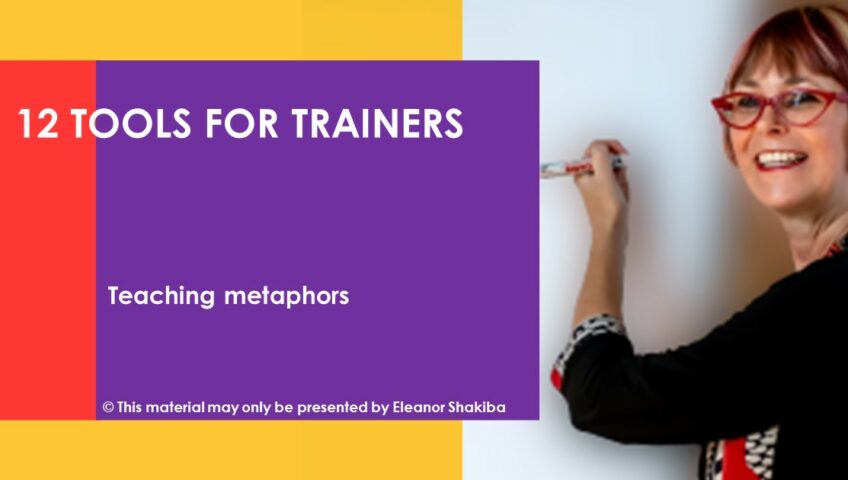My father was a philosophy lecturer. This meant bedtime stories. I grew up with what was slightly different to the average tales of Cinderella or Robin Hood. I was raised on tales of Diogenes, who lived in a wine barrel and peed on wealthy Athenians when they called him a dog. Another favourite character was Socrates, who taught by asking questions. And, of course, there was the author of rhetoric, Aristotle.
It turns out this early grounding in philosophy paid off. To this day, I draw on concepts from Socratic dialogue and rhetoric in my work as a trainer. In particular, I am fascinated by the ways trainers can use metaphors to enhance the impact of a training message. As Aristotle apparently once wrote, “To be a master of metaphor is a sign of genius.” I like to rewrite this quote slightly and say, “Mastery of metaphor is a sign of training genius.”
So what’s the best way to use metaphors? Well, that depends. It seems not all metaphors are created equal. There are five types of metaphors trainers should be aware of. How many of these do you currently use in your presentations?
Common metaphors
The name says it all. These are metaphors which are regularly used in everyday conversation. For example, calling an idea half-baked is a simple metaphor which most people would recognise. Trainers can use simple metaphors to make content accessible to course participants. However, avoid using too many common metaphors as they can make your presentations sound clichéd.
Extended metaphors
Yes! These are my favourites! They’re longer metaphors, which may, in fact, become stories. Many famous novels are extended metaphors. For example, the novel Lord of the Flies is a metaphorical exploration of human nature. The author, William Golding, stated that his book was “an attempt to trace the defects of society back to the defects in human nature”. The entire novel is structured around this concept.
How are extended metaphors useful for trainers? You can use them to trigger and sustain audience engagement just like Billy Connolly. He opens a metaphor at the start of a show, then circles back to expand upon it throughout the session. You can do this, too. This is a brilliant way to keep people listening.
Sensory metaphors
These are metaphors which appeal to the senses. They use figurative language to tap into the power of sight, sound, smell, taste and touch. For example:
- Chill out, everyone!
- Today’s hot topic is…
- Let’s get to grips with a new idea
- Think of a sweet memory
Using sensory metaphors is a neat way to connect with kinaesthetic learners. So try some out in your next presentation.
Implied metaphors
These are short metaphors in which the speaker draws on assumed knowledge to create a figure of speech. They work because they are so simple that detailed explanation is not required. A good example is saying that someone has been “barking commands” at their team. Although the speaker does not explicitly mention a dog, it is obvious to the average listener that a comparison between a person and a dog is being made.
Visual metaphors
Unlike the previous metaphor types, these are not figures of speech. They are illustrations or images which are used to create a point. For example, a trainer might use an image of a pie as a visual metaphor illustrating the process of distributive negotiation. This involves splitting a limited resource between parties in a negotiation.
Overall, the purpose of using metaphors in presentations and training is to leave an impression. The stronger your metaphor, the more powerful the learning experience. If you’d like to find out more about using metaphors and other figurative devices in your sessions, check out my retreats and masterclasses for facilitators and trainers.
About the author: Eleanor Shakiba
Eleanor is a trainer and coach, with a passion for unleashing the power of positive deviance in talented people. She has taught more than 50,000 people how to excel professionally. An expert in the field of Positive Psychology, Eleanor is also qualified in Social Anthropology, Counselling, Coaching, Adult Education and Neuro Linguistic Programming. She specialises in helping HR and L&D practitioners to unleash the power of positive psychology in business. Her major focus in developing three key areas that support positive workplace cultures: positive mindset, proactive communication and purposeful leadership. Eleanor is the author of the Positive Psychology Toolkit for HR and L&D Practitioners.
